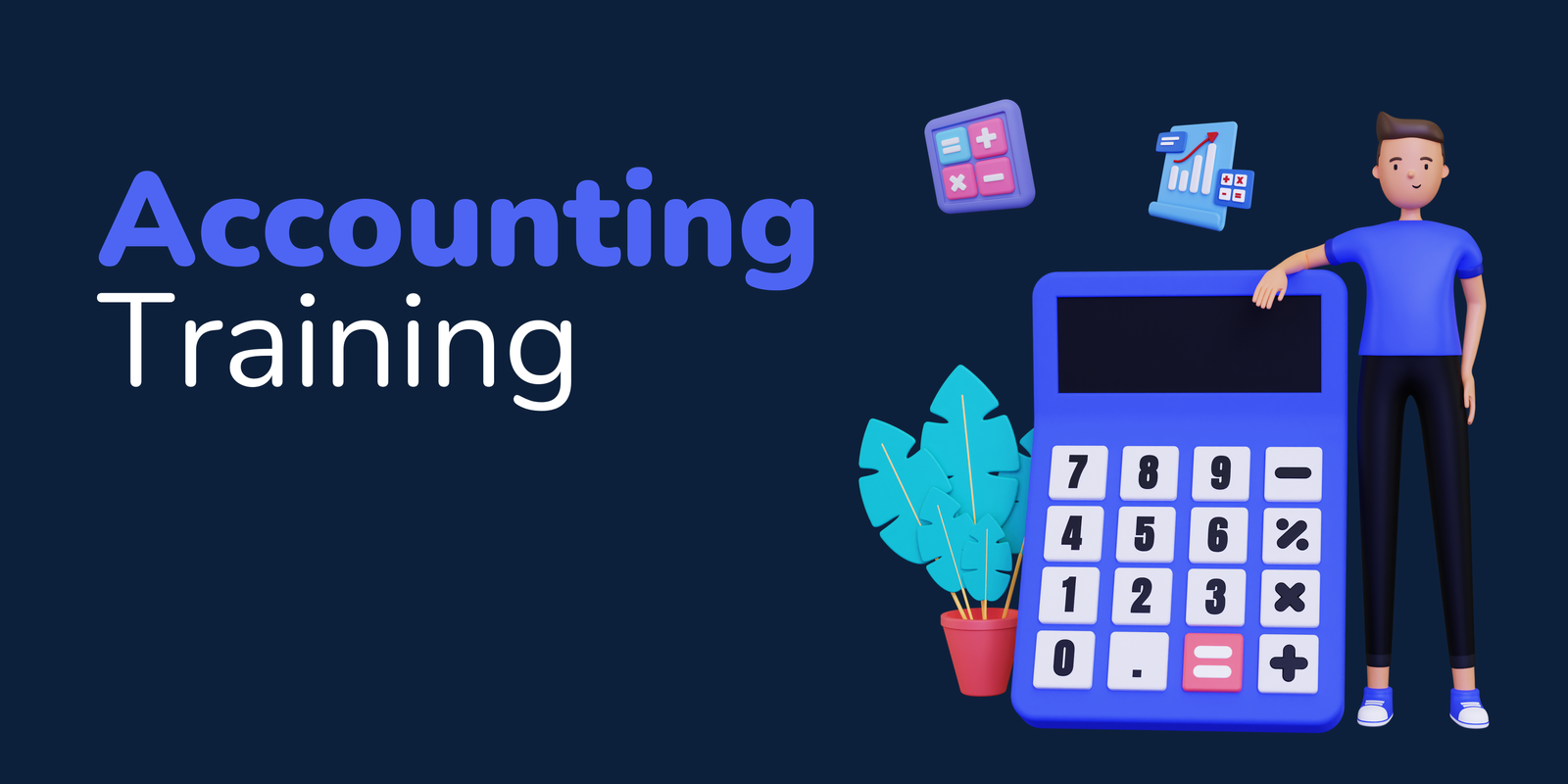
1. Introduction to E-Accounting
E-Accounting, also known as electronic accounting or online accounting, is a modern approach to managing financial information using digital tools and technologies. It involves the use of specialized software and cloud-based platforms to perform accounting tasks, record transactions, generate financial reports, and streamline financial processes. This article provides a comprehensive overview of E-Accounting, highlighting its benefits, key features and tools, implementation considerations, security measures, training requirements, challenges, and future trends. Whether you are a business owner, accountant, or finance professional, understanding E-Accounting is essential in today’s digital era to enhance efficiency, accuracy, and decision-making in financial management.
E-Accounting Course
What is E-Accounting?
E-Accounting, short for electronic accounting, refers to the use of computer-based systems and software to manage financial information and processes. It involves the digitization and automation of traditional accounting tasks, making them more efficient and accurate.
Evolution and Adoption of E-Accounting
E-Accounting has come a long way since the days of manual bookkeeping. With advancements in technology, businesses have shifted towards digital accounting systems to streamline their financial operations. From basic spreadsheets to sophisticated cloud-based software, the adoption of e-accounting has become essential for modern businesses.
2. Benefits of E-Accounting
Streamlining Financial Processes
E-Accounting simplifies and automates various financial processes, such as invoicing, payroll, and expense management. It eliminates the need for manual calculations and reduces the chances of errors, saving time and effort for businesses.
Improved Accuracy and Efficiency
By automating repetitive tasks and performing calculations digitally, e-accounting reduces the risk of human error. It also enables faster data processing, allowing accountants to focus on analyzing financial information and making more informed decisions.
Real-Time Access to Financial Data
One of the major advantages of e-accounting is the ability to access financial data in real-time. Businesses can instantly view their financial position, track expenses, and monitor cash flow, enabling them to make timely and informed decisions.
3. Key Features and Tools of E-Accounting
Cloud-Based Accounting Software
Cloud-based accounting software, such as QuickBooks and Xero, offers a range of features to manage financial tasks. It allows users to store data securely on remote servers, access information from any device with an internet connection, and collaborate with team members in real-time.
Automated Data Entry and Reconciliation
E-Accounting tools often include features for automating data entry and bank reconciliation. By directly importing transactions and automatically matching them to corresponding records, these tools reduce manual work and improve accuracy.
Financial Reporting and Analysis
E-Accounting systems generate comprehensive financial reports, such as profit and loss statements, balance sheets, and cash flow statements. These reports provide valuable insights into business performance, aiding decision-making and strategic planning.
4. Implementing E-Accounting Systems
Evaluating Business Needs and Selecting the Right System
Before implementing an e-accounting system, it is crucial to assess the specific needs and requirements of your business. Consider factors such as scalability, integration with other software, and user-friendliness. Choose a system that aligns with your business goals and budget.
Data Migration and Integration
During the implementation process, migrating data from existing accounting systems to the new e-accounting system is essential. Ensure a smooth transition by carefully transferring data and integrating the new system with other software or databases used in your organization.
User Training and Change Management
To maximize the benefits of e-accounting, it is important to provide adequate training to users who will be working with the new system. This ensures they are comfortable with the software’s features and can navigate the system efficiently. Additionally, effective change management strategies should be employed to facilitate a smooth transition for employees.
With the rise of e-accounting, businesses can streamline their financial operations, improve accuracy, and gain real-time insights into their financial position. By adopting e-accounting systems and leveraging their key features and tools, organizations can enhance efficiency and make informed financial decisions with ease.
5. E-Accounting Security and Data Integrity
Ensuring Data Confidentiality and Privacy
When it comes to e-accounting, keeping your financial information confidential is as important as keeping your secret chocolate stash hidden from your colleagues. With the increasing risk of data breaches, it’s crucial to take measures to protect your sensitive data. Utilize strong passwords, encryption techniques, and access controls to ensure that only authorized personnel can access your financial records.
Data Backup and Disaster Recovery
Imagine if your computer turned into a pumpkin and all your accounting data disappeared. Scary, right? That’s why having a data backup and disaster recovery plan is essential. Regularly backing up your e-accounting data, both on-site and off-site, ensures that you don’t lose everything in case of a hardware failure or natural disaster. It’s like having an insurance policy for your financial records.
Internal Controls and Auditing
To err is human, but to make mistakes in accounting is a big no-no. Implementing internal controls helps prevent errors, fraud, and other financial shenanigans. Regular audits ensure that your e-accounting processes are transparent, accurate, and compliant with regulations. Plus, who doesn’t love the thrill of auditors going through your financial records like Sherlock Holmes?
6. Training and Skill Development for E-Accounting
Understanding E-Accounting Concepts
E-accounting may sound like a fancy term that accountants whisper in secret meetings, but it’s not rocket science. Understanding the basic concepts, such as electronic invoicing, online banking, and cloud-based accounting software, can help you navigate the digital accounting world with confidence. So put on your accounting superhero cape and dive into the world of e-accounting!
Developing Proficiency in E-Accounting Software
If you want to be an e-accounting wizard, you need to master the magic wand of accounting software. Whether it’s QuickBooks, Xero, or any other fancy accounting software, investing time in learning the ins and outs will save you from endless headaches. It’s like getting a new pet – spend time with it, train it well, and soon you’ll be inseparable!
Continuous Learning and Professional Development
In the world of e-accounting, the only constant is change. New accounting technologies and regulations pop up faster than your favorite TV show spoilers on social media. To stay ahead, embrace continuous learning and professional development. Attend webinars, read blogs (like this one), and keep up with industry updates. Remember, if you snooze, you lose. And in e-accounting, that’s not a fun experience.
7. Challenges and Limitations of E-Accounting
Technological Infrastructure and Compatibility
As much as we love technology, it can sometimes act like a stubborn mule. E-accounting heavily relies on technological infrastructure and compatibility. Outdated systems, slow internet connections, and incompatible software can be a headache. It’s like trying to fit a square peg into a round hole. However, with proper planning and investment in robust technology, you’ll be smooth sailing in the digital accounting ocean.
Data Security and Cybersecurity Risks
Just like guarding a treasure chest from pirates, protecting your e-accounting data from cyber threats is crucial. Hackers and cybercriminals are always lurking in the shadows, ready to launch their attacks. Investing in cybersecurity measures, such as firewalls, antivirus software, and employee training, can prevent your financial data from falling into the wrong hands. Remember, the only thing scarier than a ghost is a data breach.
Transition and Adaptation Challenges
Change is hard, especially when it comes to adopting new accounting practices. Transitioning from traditional accounting methods to e-accounting can be challenging. It’s like trying to teach an old dog new tricks. Resistance to change, learning curves, and adapting to new processes can make the transition bumpy. However, with patience, proper training, and a positive mindset, you’ll soon be sailing through the stormy seas of change.
8. Future Trends in E-Accounting
Artificial Intelligence and Machine Learning in E-Accounting
Forget about robots taking over the world; they’re here to take over your accounting tasks! Artificial intelligence (AI) and machine learning are revolutionizing the e-accounting landscape. From automated data entry and expense categorization to predictive analytics and fraud detection, AI-powered accounting tools are becoming smarter than your average calculator.
Blockchain Technology in Financial Transactions
Blockchain is not just for those trendy cryptocurrency enthusiasts. It’s also making waves in the accounting world. Blockchain technology ensures secure and transparent financial transactions, eliminating the need for intermediaries. It’s like having a digital ledger that everyone can see, making financial data tamper-proof and reducing the risk of fraud. It’s time to embrace the future of accounting.
Integration with IoT and Big Data Analytics
Gear up for the era of interconnected devices and massive data sets! E-accounting is hopping on the Internet of Things (IoT) bandwagon and leveraging big data analytics. Imagine your accounting software talking to your coffee machine, your smart fridge, or even your car. By integrating IoT devices and analyzing the data they generate, e-accounting can provide valuable insights for better financial decision-making. It’s a whole new level of numbers crunching!
There you have it, folks! We’ve covered the essential aspects of e-accounting, from data security and skill development to challenges and exciting future trends. So put on your digital accounting cap and embark on the e-accounting adventure. It may have its ups and downs, but hey, that’s what makes the financial world so interesting!In conclusion, E-Accounting has revolutionized the way financial information is managed and processed. Its numerous benefits, such as improved efficiency, real-time access to data, and streamlined processes, make it a crucial tool for businesses and finance professionals. However, it is important to address the challenges and ensure proper training and security measures are in place to maximize the benefits of E-Accounting. As technology continues to advance, future trends such as AI, blockchain, and IoT integration hold exciting possibilities for the future of E-Accounting. By embracing and adapting to these advancements, organizations can stay ahead in the ever-evolving world of finance and accounting.
FAQ
1. What is the difference between E-Accounting and traditional accounting?
E-Accounting utilizes digital tools and cloud-based platforms to manage financial information, while traditional accounting relies on manual processes and physical record-keeping. E-Accounting offers real-time access to data, automated processes, and improved efficiency compared to traditional methods.
2. Is E-Accounting secure for storing financial data?
Yes, E-Accounting systems prioritize security measures to protect financial data. This includes data encryption, user access controls, regular backups, and disaster recovery plans. However, it is essential to choose reputable software providers and implement additional cybersecurity measures to ensure the highest level of data security.
3. Do I need special training to use E-Accounting software?
While prior accounting knowledge is helpful, many E-Accounting software platforms offer user-friendly interfaces and provide training resources and support. However, it is advisable to undergo training to fully understand the features and functionalities of the software and maximize its potential for efficient financial management.
4. What are the future trends in E-Accounting?
The future of E-Accounting holds exciting possibilities. Some emerging trends include the integration of artificial intelligence (AI) and machine learning for automated data analysis and decision-making, blockchain technology for secure financial transactions, and the integration of Internet of Things (IoT) devices and big data analytics for real-time financial insights. These advancements have the potential to further streamline and enhance financial management processes.
